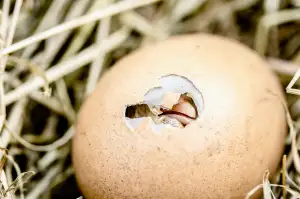Perfect Pork Chop Temp: Cooking Tips for Juicy Results

Importance of Pork Chop Temp
The temperature at which pork chops are cooked is crucial for both safety and taste. Cooking pork chops to the correct internal temperature ensures that harmful bacteria like salmonella and E. coli are killed, making the meat safe to eat. Additionally, cooking pork chops to the right temperature helps to retain their juiciness and tenderness, resulting in a more flavorful dining experience. It is essential to use a meat thermometer to accurately measure the internal temperature of pork chops to achieve perfect results every time.
Recommended Internal Temperature for Pork Chops
When cooking pork chops, it is crucial to ensure they reach a safe internal temperature to avoid any risks of foodborne illnesses. The recommended internal temperature for pork chops is 145°F (63°C) as per the USDA guidelines. This temperature ensures that the pork is safe to eat while still retaining its juiciness and flavor. Using a meat thermometer is the most accurate way to check the internal temperature of the pork chop and guarantee it has reached the desired level of doneness.
Methods to Ensure Pork Chops Reach Safe Temp
To ensure pork chops reach a safe internal temperature, it is crucial to use a meat thermometer. Insert the thermometer into the thickest part of the chop without touching bone for an accurate reading. Another method is to sear the pork chops on the stovetop and then finish cooking them in the oven until they reach the desired temperature. Additionally, using a sous vide cooker can help maintain a consistent temperature throughout the cooking process, ensuring that the pork chops are safely cooked to perfection.
Tips for Juicy and Flavorful Pork Chops
To ensure juicy and flavorful pork chops, consider brining them before cooking. Brining involves soaking the chops in a mixture of water, salt, sugar, and herbs for a few hours. This helps the meat retain moisture during cooking, resulting in a juicier end product. Additionally, marinating the pork chops in a mixture of oil, acid (such as vinegar or citrus juice), and seasonings can enhance their flavor profile. Finally, letting the cooked pork chops rest for a few minutes before slicing allows the juices to redistribute throughout the meat, ensuring each bite is succulent and delicious.
Common Mistakes to Avoid When Cooking Pork Chops
1. Overcooking: One of the most common mistakes is overcooking pork chops, which can result in dry and tough meat. To prevent this, use a meat thermometer to ensure you cook the pork chops to the recommended internal temperature.
2. Skipping the Resting Period: After cooking, allow the pork chops to rest for a few minutes before cutting into them. This helps redistribute the juices throughout the meat, ensuring a juicy and flavorful bite.
3. Using High Heat Only: While it's important to sear pork chops at high heat for a nice crust, cooking them solely on high heat can lead to uneven cooking and potential burning. Start with high heat and then finish cooking at a lower temperature for even doneness.
4. Not Seasoning Adequately: Seasoning is key to enhancing the flavor of pork chops. Don't forget to season generously with salt, pepper, and other herbs or spices of your choice before cooking.
5. Cutting Into Them Too Early: Resist the temptation to cut into the pork chops immediately after cooking as this can cause all the juices to run out, leaving you with dry meat. Allow them to rest as mentioned earlier before slicing and serving for optimal results.
Published: 03. 05. 2024
Category: Food



